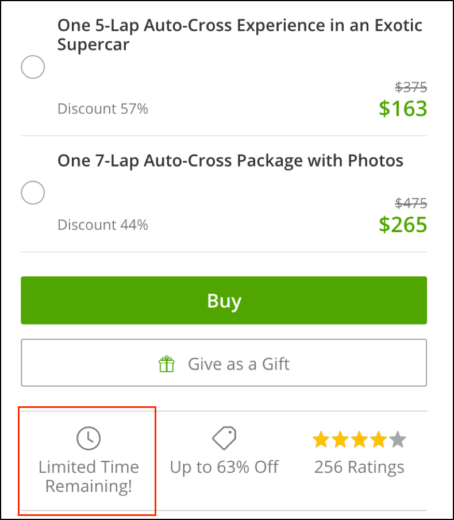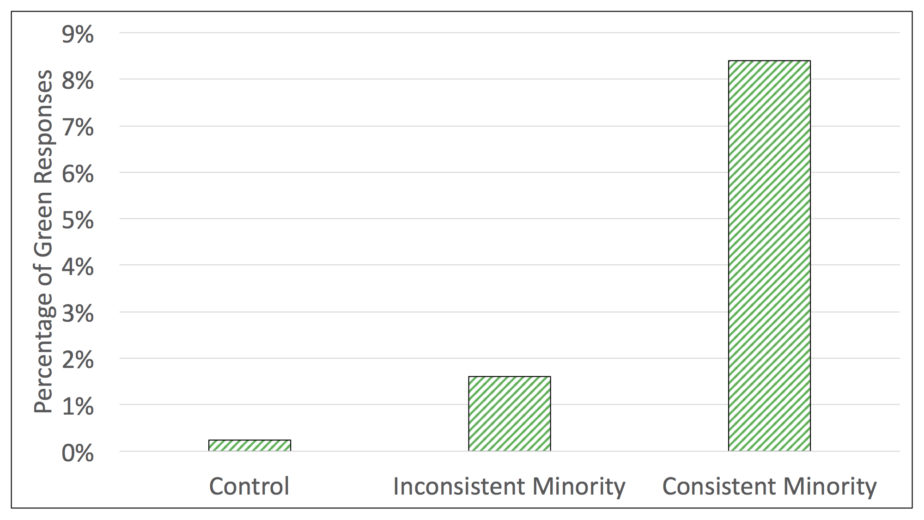Marketing is an art form in and of itself. A key piece of marketing is the audience. The saying “Know your audience” tends to be a rather ambiguous command that gets thrown around often as a solid step to ample conversions. I propose that knowing what your audience is thinking or even the steps in their thought process is even more beneficial than simply knowing who they are. Enter psychology.
I’m not going to be able to teach you everything you need to know to fully get inside your users’ thought processes today, but I will dive into the most important psychological principles that I believe you can begin using immediately and easily.
1) Self-Efficacy
Explanation: Self-efficacy is your personal confidence in your capabilities to complete a behavior. Think back to the little engine that could. He had really high self-efficacy.

Example: Diets and exercise regimens are based on a foundation of self-efficacy. This is the difference between rising up to a face a challenge and turning around and embracing defeat. Folks who maintain rigorous exercise regimens tend to have high self-efficacy and rise to the challenge of pushing their body close to its physical limits repeatedly.
Implementation: Keep it simple! What is “it” you ask? Everything. Literally everything. Take your ad copy, your landing page copy, even your imagery, and ensure that it is concise and clearly lays out your conversion process. If your users cannot determine how to convert, or if your conversion process seems too complex, users with lower self-efficacy will experience friction and immediately turn around in defeat. By declaring simplicity across your pages and ads you can ensure that every user believes they can convert seamlessly.
2) Reciprocity
This principle is incredibly simplistic but the implications are absolutely fascinating.
Explanation: Reciprocity is a social norm in which if I give you something, you then feel obligated to return the favor and give me something.

Example: Here’s the fascinating part. This principle is not reserved for physical items as in gift giving. It also applies to attitudes and perceptions. Reciprocity is an integral part of why we humans like people who like us and dislike people who dislike us. It is also the primary principle behind compliment circles. These are the situations in which one person compliments another person and the compliment receiver then compliments the giver in return.
This principle is also the foundation of rewards programs. I will buy gas at the gas station I have a rewards card with purely because I know I will get a 3 cent per gallon discount with my rewards card. I don’t even take into account that another gas station may be cheaper than the cost per gallon even with my discount.
[bctt tweet=”Loyalty is a common side effect of repeated reciprocity.” username=”katewilcoxppc”]
Implementation: Users are essentially gifting you with their conversion. Thus, in order to inspire them to convert you should gift them with something first. For instance, recently we ungated our content on Hanapin.com (you can read more about that here) and believe it or not we’ve seen an increase in the amount of people pursuing further contact with us.
3) Loss Aversion
Explanation: Negative feelings as a result of loss are much stronger than positive feelings as a result of gain. Thus, humans are more motivated to pursue a behavior in aspiration of preventing failure than they are to pursue the same behavior in aspiration of gaining success.

Example: Believe it or not (I’m talking to you “rational” folks) our emotional state greatly impacts our decision making processes. This principle can most blatantly be seen in gambling behaviors. Let’s quickly dig in to the results of a 2006 study concerning loss aversion.
You have $50 to gamble with and you have to choose one of these two options:
- Keep $30 and leave.
- Gamble with a 50/50 chance of keeping your $50 or losing your $50.
Which option would you choose? In the study, 43% of the participants decided to pursue the gambling option. But what if we changed your first option? You have $50 to gamble with and you have to choose one of these two options:
- Lose $20 and leave.
- Gamble with a 50/50 chance of keeping your $50 or losing your $50.
Now, which option would you choose? In the study, 61% of participants decided they wanted to pursue the gambling option.
When faced with a loss of $20, which is equal to keeping $30 of the original $50, people are much more motivated to gamble or pursue a risk. Why? Because humans hate losing. This behavior is not isolated to that over-competitive person we all know.
[bctt tweet=”We all hate to lose and that’s strongly motivating.” username=”katewilcoxppc”]
Implementation: Language is powerful. Evoking a loss can inspire a conversion more readily than evoking a gain. There are also many visual cues that will infer loss. Groupon does this well by mentioning, right next to the CTA, that there is a limited time remaining on their offer. Notice the ambiguity in “limited time remaining” so that the user has no idea what the exact length of “limited” is.

4) Conversion Theory
Explanation: This theory holds that a consistent and confident minority voice in a group can influence the majority.
Example: Using reversed methodology from Asch’s famous line study on conformity, Serge Moscovici designed a study in which a group of folks was asked to look at a slide deck with slides containing various shades of blue and respond with what color they believed to be showing on the slide (hint: the correct answer is always blue). Groups were composed of 4 randomly selected participants along with 2 participants that were covertly instructed to lie by verbally reporting that the color on the slide was green.
In groups without the 2 covert liars present, the other 4 participants reported 0.25% of the slide deck to display green on the slides. In groups containing the 2 covert liars, the other 4 participants reported 8.4% of the slides to display green.

When the majority’s opinion is challenged by the minority, the majority is willing to listen to the rationale behind that challenge. Displaying confidence and staying consistent enabled these 2 covert liars to convince participants to report that blue was really green.
Implementation: We are all aware that testimonials can be quite powerful. However, a testimonial with a unique view or your product or service can be even more powerful than a generic testimonial praising your product or service. Even more powerful is a testimonial of a converted believer, also known as a user that states their previous disbelief in the product or service and how the product or service overcame that disbelief.
[bctt tweet=”Find a testimonial that breaks the norm and display it loud and proud.” username=”katewilcoxkcco”]
Furthermore, place the words of your users into your copy. This practice not only makes you seem more personable because you’re literally speaking on their level, it also establishes the consistency and confidence that is necessary in order for you to benefit from this principle.
5) Social Influence
Explanation: Your opinions, behaviors, and even emotions can be impacted by other folks.
Example: Smiling is infectious guys. Why? Because as I said, your emotions can be influenced by other people. Try smiling from ear to ear at folks today and I dare you to find a single one of them that doesn’t at least flash an awkward smile for a split second.
This can also be seen in an experiment conducted by Milgram, Bickman, and Berkowitz in 1969 in which informed participants stood on a busy street corner and stared at the sky. Almost immediately, passersby also chose to look at the sky. They found that when a group of four or more folks stood on the street corner to look at the sky, 80% of passersby would also look at the sky if only for a second.

Implementation: Using ad extensions, especially seller and consumer ratings, can influence a user’s decision to initially click on your ad (you can learn more about ad extensions in this article). If users see that you have a 5-star seller rating and high numerical values on consumer reviews they may perceive you as more trustworthy and your products or services as more valuable. Then you’ve established several beneficial user mindsets before they even hit a landing page.
You can also use social influence by having testimonials on your landing page and ensuring that the testimonials are prominently displayed near the top-middle range of your page.
Another useful trick is to let users know how many other folks have the product or service that you’re offering. Unbounce does a wonderful job of combining this tactic with other tactics by informing users that a large number of companies not only use their product, but also see benefits as a result of using their product.

Final Thoughts
I’ve truly only scratched the surface of the bucket that holds all of the psychological principles you can use to amp up your marketing tactics. However, these 5 principles can easily and promptly be applied in a variety of facets to each and every account out there.
Go forth and optimize with your users’ thought processes in mind and feel free to let me know if you know of any other psychological principles that have been incredibly beneficial in your marketing journeys!



